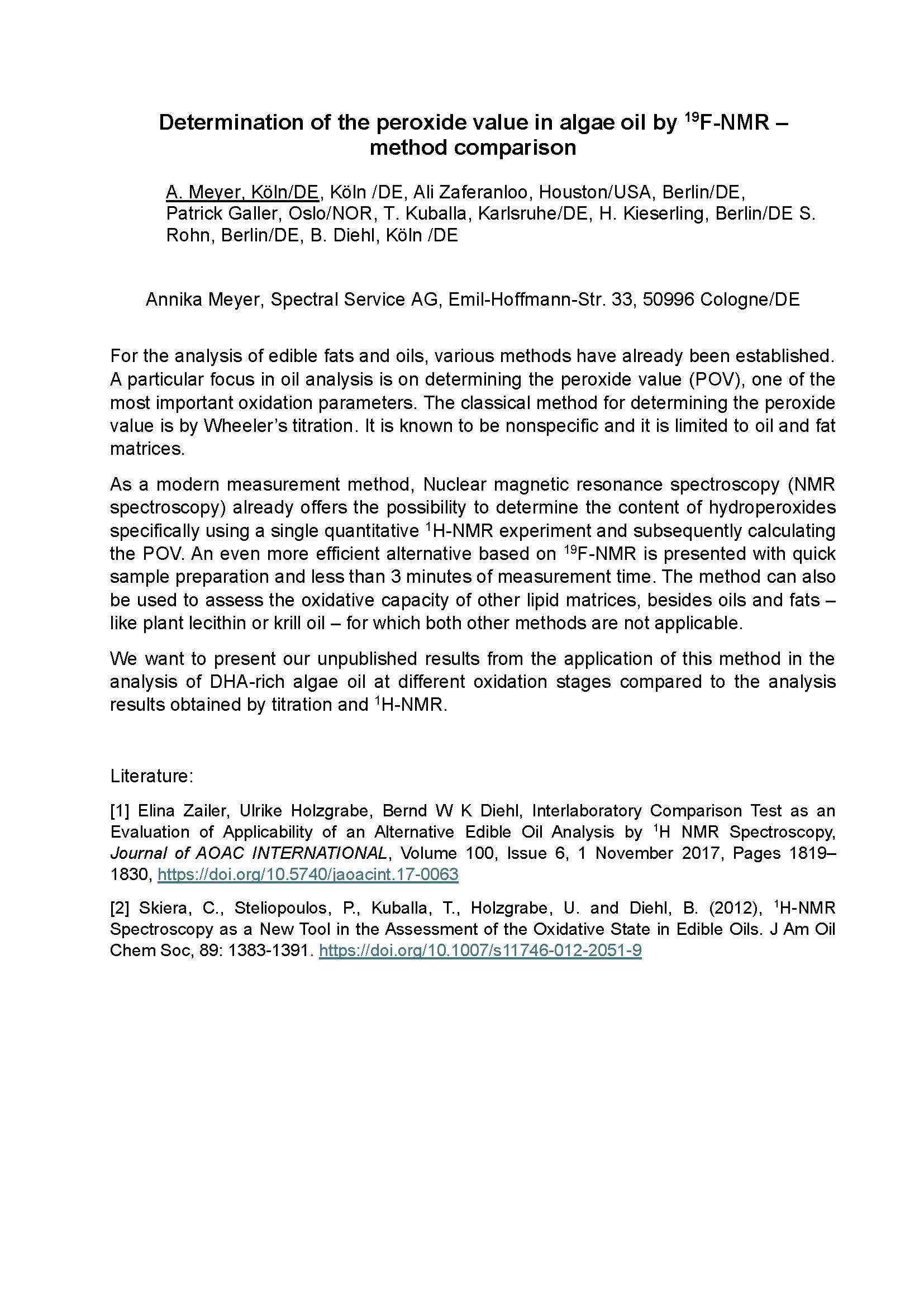For the analysis of edible fats and oils, various methods have already been established. A particular focus in oil analysis is on determining the peroxide value (POV), one of the most important oxidation parameters. The classical method for determining the peroxide value is by Wheeler’s titration. It is known to be nonspecific and it is limited to oil and fat matrices.
As a modern measurement method, Nuclear magnetic resonance spectroscopy (NMR spectroscopy) already offers the possibility to determine the content of hydroperoxides specifically using a single quantitative 1H-NMR experiment and subsequently calculating the POV. An even more efficient alternative based on 19F-NMR is presented with quick sample preparation and less than 3 minutes of measurement time. The method can also be used to assess the oxidative capacity of other lipid matrices, besides oils and fats – like plant lecithin or krill oil – for which both other methods are not applicable.
We want to present our unpublished results from the application of this method in the analysis of DHA-rich algae oil at different oxidation stages compared to the analysis results obtained by titration and 1H-NMR.
